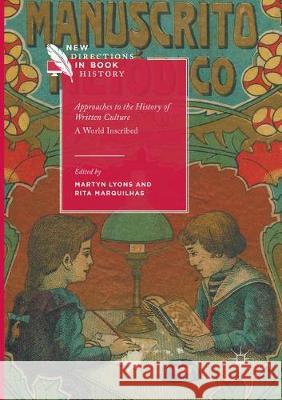Approaches to the History of Written Culture: A World Inscribed » książka
topmenu
Approaches to the History of Written Culture: A World Inscribed
ISBN-13: 9783319853284 / Angielski / Miękka / 2018 / 272 str.
Approaches to the History of Written Culture: A World Inscribed
ISBN-13: 9783319853284 / Angielski / Miękka / 2018 / 272 str.
cena 459,42 zł
(netto: 437,54 VAT: 5%)
Najniższa cena z 30 dni: 459,42 zł
(netto: 437,54 VAT: 5%)
Najniższa cena z 30 dni: 459,42 zł
Termin realizacji zamówienia:
ok. 20 dni roboczych.
ok. 20 dni roboczych.
Darmowa dostawa!
Kategorie:
Kategorie BISAC:
Wydawca:
Palgrave MacMillan
Seria wydawnicza:
Język:
Angielski
ISBN-13:
9783319853284
Rok wydania:
2018
Wydanie:
Softcover Repri
Ilość stron:
272
Oprawa:
Miękka
Wolumenów:
01











